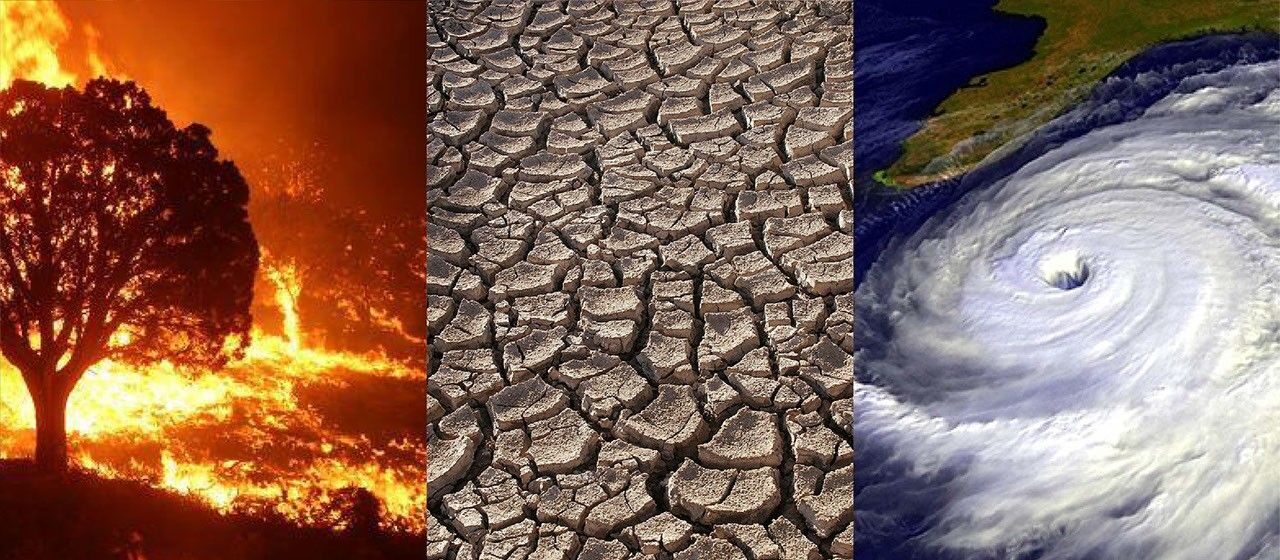Practical Ways to Address Climate Change in Our Everyday Lives
Many people are plagued by feelings of anxiety and depression when thinking about the climate crisis. I have found that the best remedy for these overwhelming feelings is understanding the causes and what actions I can take, as an individual, to help make things better. With this in mind, I intend to do my best in this post to provide clear information and decisive actions that one can take. Beyond the information provided in “Into The Thick Of It,” this post will go further into what we, as individuals, can do to help correct our current course and head toward a more healthy planet in the future. After discussing the most common individual contributions to greenhouse gases, I will provide several examples of impactful actions that one can take to help. However, though we can help ensure that the climate crisis does not worsen, the greenhouse gases already in the atmosphere will remain until they dissipate with time. Therefore, we must understand that along with mitigation – the actions we take to limit the severity of climate change – there is also a need for adaptation – modifying our cities, homes, and lives to adjust to new environmental and societal conditions already baked in.
Most of us already know that our carbon footprint – the amount of carbon dioxide and methane produced by the actions of one person, family, business, etc. – can be reduced through actions such as carpooling or driving a more fuel-efficient car. However, though the transportation sector is the largest emitter of greenhouse gases in the U.S., there are many actions that individuals can take to limit their footprint that have nothing to do with their choice of vehicle. (We will return to the transportation sector later in this post.) The second largest emitter of greenhouse gases is the electricity production sector; and, as individuals, there is much we can do to help mitigate these emissions with little effort and, often, no expense. For example, heating and cooling our homes accounts for 40-50 percent of household energy use. This is why adjusting our thermostats to just five degrees cooler in the winter and five degrees warmer in the summer can make a big impact on household energy consumption, not to mention the money you will save. We can also reduce our energy consumption by making sure our home has proper insulation and that we are not bleeding heat or air out around doors and windows that lack proper seals. The next most energy-intensive thing in our homes is our water heater which often accounts for over 10 percent of household energy use. So, limiting hot water use and making sure our water heater is maintained or upgraded is another way we can limit our household footprint. Additionally, though many people cannot afford to upgrade their major appliances (washing machine, dryer, refrigerator, water heater, and dishwasher) to more energy-efficient versions, when our old appliances do have to be replaced, we should consider buying ones that use less energy. Again, all of these actions will save money in the long run. Lastly, if we have the means, installing solar panels or switching to some other form of renewable energy is one of the most impactful actions we can take.
As consumers, we can also affect change through our purchasing power. Industry is the third largest emitter of greenhouse gases. Therefore, what we choose to spend our money on has a great impact. One of the best mottos to remember is, “reduce, reuse, recycle.” This means reducing our overall purchases; trying to buy more reusable products; recycling our waste, and buying recycled products when possible. Buying reusable products (water filters and bottles, paper towels, cleaning products, straws, shopping bags, batteries, kitchen wax wrap, etc.) and avoiding single-use items (water bottles, paper plates, plastic cups, plastic shopping bags, etc.) limits the amount of energy and resources needed to produce those items, as well as the waste produced. The practice of buying reusable products also helps limit our overall purchases. Along these lines, properly caring for our reusable products so that they last longer is also important. This is especially true for clothing, as the clothing industry is often very energy and resource-intensive. Therefore, if we shop second-hand for our clothing, or buy from a more durable, environmentally-conscious brand, we are also making a positive impact. Lastly, recycling when we can keeps products out of landfills and limits the amount of new resources that must be acquired to produce certain products; therefore, the energy used in obtaining those resources is also reduced. The video below describes some innovative ways we reuse and recycle items to reduce our emissions and waste.
Our diet is another area where a little difference goes a long way. For example, if we limit our consumption of meat by even two to three days a week, we could lower our carbon footprint substantially. Raising livestock accounts for almost 10 percent of U.S. greenhouse gas emissions, 15 percent globally, with methane making up the majority of the gases released. Cows raised for beef present several environmental issues. Aside from the massive amounts of methane they expel each year, it takes over 1,800 gallons of water to produce 1 pound of beef, and over 1/3 of the land of mainland United States is used for grazing cattle, with another 127 million acres of land needed to grow crops that feed cattle. This need for land also drives deforestation, with raising livestock being the leading cause of deforestation. So, we can see how limiting our meat consumption, especially beef, as much as possible would be very beneficial. Of course, a vegetarian diet would be most beneficial, but I do not believe everyone must become vegetarian for us to still make a major difference. However, we can help satiate some of our meat cravings with plant-based meats, many of which are hardly distinguishable by taste from animal meats. In addition, limiting our intake of red meat could improve our health, as red meat is high in calories, contains saturated fat, and has been linked to type-2 diabetes. Lastly, factory farms and the inhumane treatment and slaughter of these animals should add to the incentive to reduce our consumption. Below is another short video that addresses the impacts of meat production and consumption.
However, one of the most important actions we can take to address the climate crisis is voting for climate-friendly candidates and demanding climate action from your government. This is because we, as individuals, cannot solve the climate crisis on our own. We did not create many of these environmental issues individually, many of the decisions that led us here (widespread use of fossil fuels over renewable energies, encouragement of meat-based diets, encouragement of motor vehicle use and suburban living, etc.) were made at the societal level. Therefore, mitigation must also include societal change. In an article by The Guardian, Anders Leverman discusses this issue:
We don’t expect individuals to take the lead when it comes to other social and economic challenges, such as unemployment…
The same…[should be] true of the climate crisis. What we need is citizens to make adamant demands of their politicians and institutions for more urgent action. Just as no party that pledged to increase rather than reduce unemployment would ever get elected…, no political party should be allowed to dodge a clear strategy against climate risks. This is a challenge for politics, not for the individual…
If we take civil and human rights seriously, we cannot assign solving global problems to the individual. And the call for greater individual responsibility actually risks becoming detrimental to the cause as it prevents people from realising the scale of political change that needs to happen. Instead of seeing the big picture, people are diverted to the fine print on the refrigerator shelf in the supermarket.
This leads us back to the transportation sector. In the late 1940s and early 1950s, there was a concerted effort by the U.S. government to encourage suburban home ownership in the white population through policies such as the Federal Housing Act (FHA) and the post-WWII GI Bill. At the same time, there was a major investment in the development of a federal interstate system with the Federal-Aid Highway Act of 1956. With ever-increasing numbers of families living in the suburbs but working in the cities, the automobile became a necessity for daily life, and advertisements of the time portrayed the automobile as a symbol of freedom and status. However, though electric vehicles already existed in the early 1900s, subsidies for the oil industry, the development of the interstate system, and the lack of investment in electric vehicle infrastructure all helped ensure the rise of gas-powered vehicles. This is a clear example of a societal issue, encouraged by historical governmental policies, that will require federal action to be changed.
Therefore, placing all of the responsibility on the individual is not a fair or realistic solution to auto-related carbon emissions. Though buying a more fuel-efficient vehicle is an environmentally and economically sound decision, most Americans cannot afford to purchase a new vehicle, even when offered a tax credit. Therefore, the government must take responsibility for helping create a society that relies less on gas-powered vehicles. The first thing the U.S. government must do is heavily invest in research and development of hybrid and electric vehicles and the infrastructure to support them. This will help bring down the cost of these vehicles as well. Additionally, they must continue to enact stricter emissions standards on gas-powered vehicles. Even more importantly, they must invest in expanding public transit options, such as high-speed rail, trains from suburban areas into the cities, and buses and/or subways within cities. Then, once Americans have been provided with alternatives, the government should start eliminating oil subsidies and reroute those subsidies toward renewable energy, electric vehicle infrastructure, and public transit systems. Again, this is just one example of the need for government action. In the video below experts discuss various ways that governments must step in to address the climate crisis; these are the types of demands we must make of our leaders.
Featured image: https://www.apge.com/blog/why-small-things-matter




Unfortunately, OUR government will soon be grinding to a halt on climate. Let us hope others pick up the slack.
This is very true and disheartening. However, we, as individuals, can still try our best. And, like you, I also hope that other countries do not follow our lead while under this new administration.